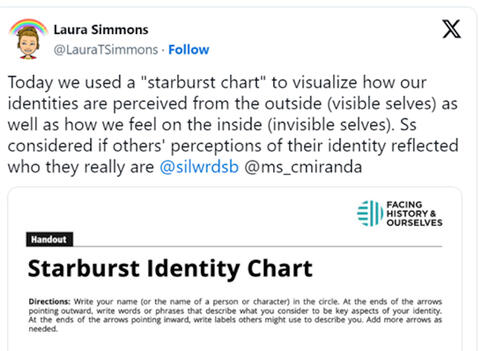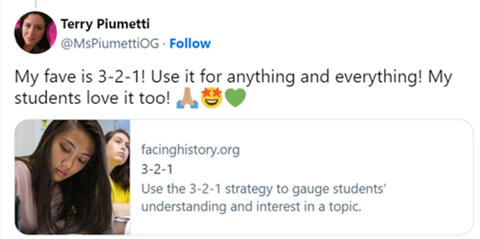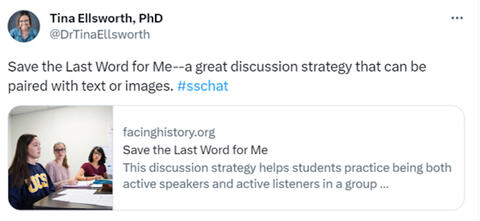One of the most valuable things about the Facing History network is the opportunity to continuously learn from each other about best practices for the classroom. Every classroom is different, every student is unique, and our teaching strategies are designed to be customized to meet the needs of your students. As you prepare for the new school year, check out what other Facing History teachers have to say about how they’ve used our teaching strategies in their classrooms.
Contracting
Contracting is a staple at Facing History. Engaging in this practice early can set the tone for the rest of the school year by creating a reflective classroom community where explicit rules and established norms protect everyone’s right to speak; where differing perspectives can be heard and valued; where members take responsibility for themselves, each other, and the group as a whole; and where each member has a stake and a voice in collective decisions.
Facing History teacher John Dee uses contracting to help students see that teachers and classmates are equal partners in the learning experience. “I want students to really feel that it’s a community,” Dee says. “I’m not just their leader. Certainly I’ll be the educator leading them through lessons, but I want them to feel that I'm part of the class too [...] It’s important for me to follow the same expectations.”

Big Paper
Big Paper is another classic strategy that has stood the test of time. It works well in physical classrooms as well as online learning environments. By using writing and silence as tools to explore a topic in depth, students have the opportunity to slow down their thinking and engage with other points of view. Big Paper offers an entry point for students who are more comfortable on paper or who might want or need to be quiet on a given day. It’s also a great way to archive student thoughts and questions so you can revisit them at a later date.
Some teachers have paired this strategy with technology, using QR codes to provide additional material for students to engage with:

History teacher Kevin Toro uses this strategy to help students personally connect with the material. “Some students won’t want to raise their hands, some students won’t want to talk. But in that private sphere of looking over that paper while it is attached to the poster, and being in stations reading it and being able to write on it – that gives them a connection to the history itself. They are dealing with primary sources, but it almost feels personal in a way.”
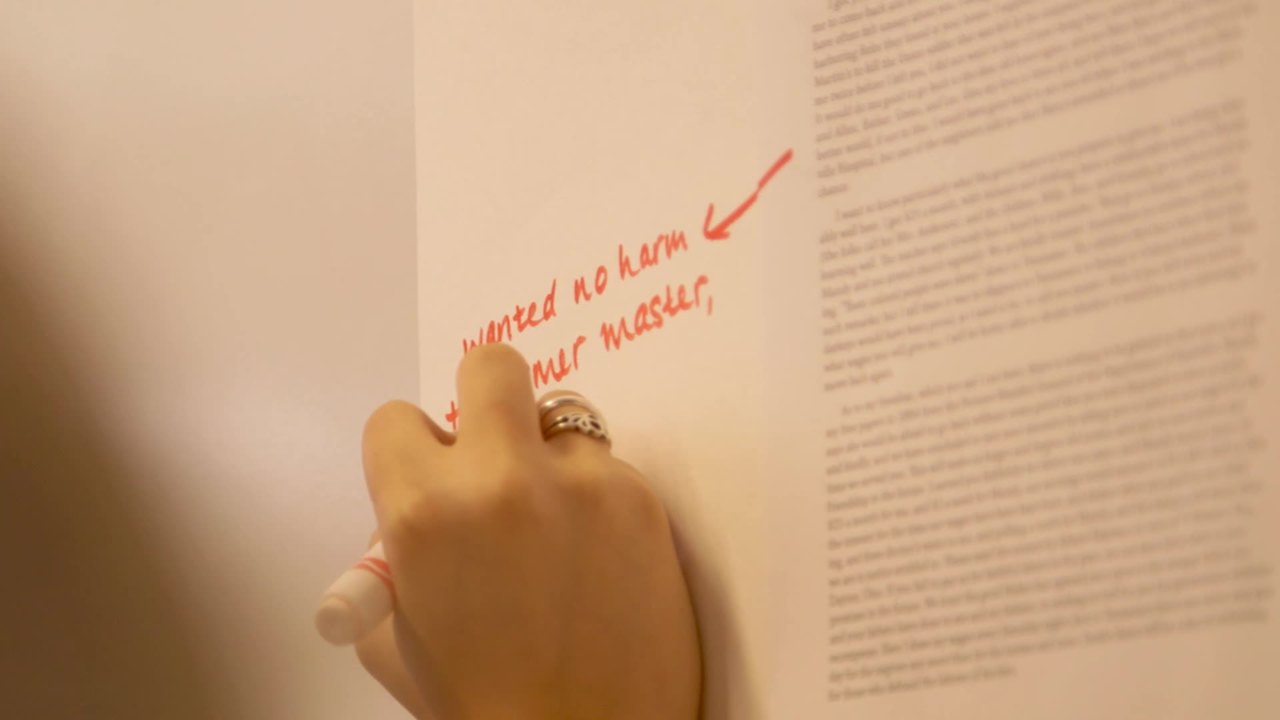
Concentric Circles
Using the concentric circles strategy helps engage all students in discussion – especially those who tend to shy away from public speaking. This strategy prompts students to respond to a question in a paired discussion. Michelle Livas, who refers to this strategy as a “line dance,” finds this particularly helpful in providing comfortable ways for her quieter students to engage. “As a discussion strategy, students are one-on-one. There is eye contact, but it’s brief. If they can collaborate, [...] it’s terrific. If students aren’t comfortable, they’ll know they can move in a minute and talk to someone else.”
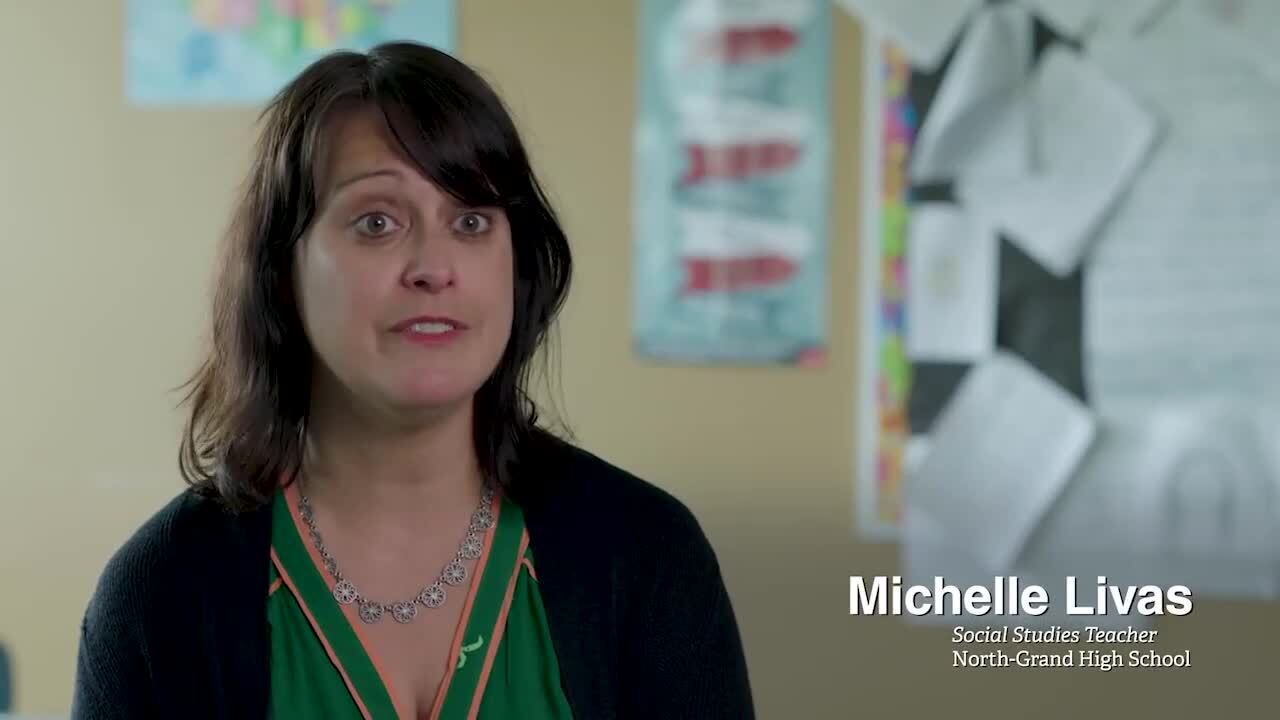
Connect, Extend, Challenge
The Connect, Extend, Challenge strategy helps students both deepen their understanding of a topic and become more thoughtful and independent learners. Facing History teacher Jenna Forton notes that one of the great things about this strategy is that it’s flexible and can be used in many contexts to help students make personal connections to the material. “Students are able to engage with it in a way that is relevant to their own lives,” she says. “I start every unit with coming back to students at the center. They see how important their voice is in the classroom, and that has a way of disarming them from thinking that this is about any other thing except for them. They know that it always comes back to them and that their voice matters. That’s central to keeping students’ trust and keeping them safe in these difficult histories.”

Four Corners
Today’s students are coming of age amid political polarization, economic inequality, ongoing public health crises, and climate change. These current events will inevitably find their way into your classroom but we know discussions of these topics can be controversial and/or emotionally charged. Banjineh Browne uses the Four Corners strategy to prepare students for these conversations by using their own experiences to explore their opinions and understandings.
Using the Four Corners strategy elicits the participation of all students by requiring everyone to take a position on a subject. Four corners in the room are labeled either “strongly agree”, “agree”, “disagree”, or “strongly disagree” and students are instructed to stand in the corner that best represents their feelings about a particular statement. As students take turns discussing their position, they encounter ideas different from their own, they have the opportunity to reflect on why they think and believe what they do, and they have the option to move to a new corner if something they hear changes their perspective. All of this helps to prepare young people to engage in conversation across difference in the broader world. Four Corners can be a useful way to bookend tough conversations – it helps students frame their arguments and understand the evidence supporting varying points of view.

These are only a few of our many teaching strategies. Last month we shared our five most popular strategies, but there are over 80 in our resource bank that can be adapted for your classroom!


